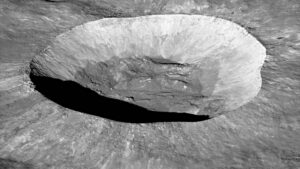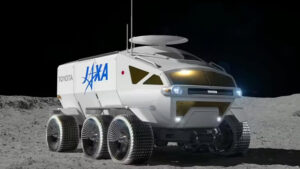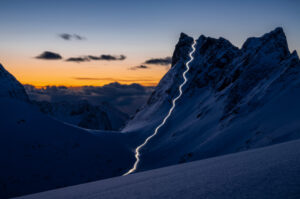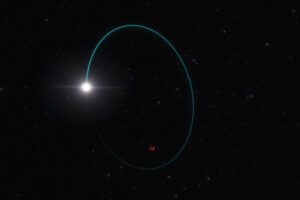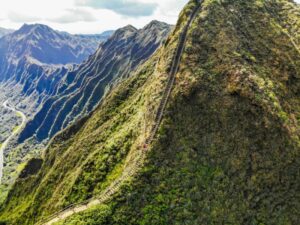By now, you’re aware that dark night skies are an increasingly rare commodity. That is unless you’ve been living under a rock or on top of one in a very remote place.
The International Dark-Sky Association (IDA) now estimates that light pollution makes the Milky Way invisible to 80% of people in the U.S. and Europe. Elsewhere, it can be even worse. As a child, one woman we know who grew up in Beijing believed that stars didn’t really exist, because she’d never seen one.
To raise awareness about light pollution and its many negative effects, the conservation group presents International Dark Sky Week.
Dark Sky Week
Held each year during the week of the new moon in April, it aims to encourage people around the world to cut their lights at night and turn their eyes to the sky.
You can celebrate this year’s Dark Sky Week (April 22-30) with this handy travel guide to IDA-certified Dark Sky locations across the United States. Region by region, we break down the best places for nocturnal exploration, communing with primordial darkness, and, of course, stargazing.
For the interactive map of all IDA-designated Dark Sky Places, click here.
East Coast and Appalachia dark sky locations
Katahdin Woods and Waters National Monument, Patten, Maine

Katahdin Loop Road Overlook at “Stars Over Katahdin” 2019. Photo: John Meader
Below Maine’s Mount Katahdin (5,267 feet), cold, crystalline streams tumble over granite erratics (read: seemingly out-of-place rocks). Overhead, the Milky Way spans the night sky. Katahdin Woods and Waters National Monument is free to enter. See details at the monument’s National Park Service landing page.
Mayland Earth to Sky Park, Burnsville, North Carolina

The Bare Dark Sky Observatory.
The Mayland Earth to Sky Park, perched in the Appalachian Mountains near Asheville, N.C., is an environmental educational park for anyone interested in learning about our world, from the earth to the sky. The Park is open to the public and offers 24-hour access to the parking lot for stargazing. But the main attraction is the Bare Dark Sky Observatory, which houses the largest telescope in the Southeast dedicated for public use. The “Sam Scope” gives a 360-degree view of the nighty sky from an elevation of 2,732 feet.
Sky Meadows State Park, Delaplane, Virginia

Winter stars over the Mount Bleak House, a 19th-century Federal-style farmhouse in Sky Meadows State Park. Photo courtesy of the Virginia Department of Conservation and Recreation
Sky Meadows State Park is a 1,860-acre site in northern Virginia, about one hour west of the Washington, D.C. metro area. The name “Sky Meadows” comes from former owner Robert Hadow, who named the property Skye Farm after the Scottish isle of the same name. It became an IDA-certified Dark Sky site in 2021.
Harmony, Florida

Photo: Derek Demeter
Harmony, Fla. is a tiny residential community situated between Melbourne and Orlando. Despite its moderate proximity to each city, the unincorporated area and its 1,000 residents enjoy IDA-certified dark skies. The central Florida town has hosted Dark Sky festivals and parties (independently from Dark Sky Week) over the years.
Midwestern and Great Lakes dark sky locations
Observatory Park, Montville, Ohio
Astronomical attractions pack Ohio’s Observatory Park, just east of Cleveland. Numerous features include a trail with interactive pods that seek to put the massive scale of the sun in perspective, a trail with interactive meteorological stations, life-sized cornerstones of the Great Pyramid of Giza, earthen mounds, henge stones, and access to the Nassau Astronomical Station. The telescope, built in 1957, was renovated in 2017.
Palos Preserves, Willow Springs, Illinois

Maple Lake Vista within the Palos Preserves basking underneath a starry sky. Photo: Joe Occhiuzzo
If any of the IDA’s certified sites represents the tension between darkness and light, it’s Cook County’s Palos Preserves. Part of one of the oldest and largest conservation districts in the country, it sits among 70,000 acres inside the Chicago city limits. The IDA designated it an “Urban Night Sky Place,” which it says “promote[s] the resource of the nighttime environment to those who need it most.” Despite the location’s immediate urban proximity, the IDA says its night sky readings are 1.5 magnitudes better than Chicago’s. Here’s an explanation of magnitudes, along with some practice exercises. (If you can solve them, feel free to email us your answers.)
Newport State Park, Ellison Bay, Wisconsin
At the very end of Wisconsin, jutting out into Lake Michigan, the Door Peninsula is about as far out as you can get in the Midwest. That’s what made the location an IDA-certified Dark Sky place in 2017. Newport State Park is open to all visitors for camping and fishing.
Medicine Rocks State Park, Ekalaka, Montana

Photo: Nathan Satran
It’s not altogether surprising that the sky at Montana’s Medicine Rocks State Park is dark. But that’s one of the few unsurprising things about it. In a backdrop that once surprised a young Theodore Roosevelt, sculpted sandstone towers jut from the frying pan-flat landscape everywhere. Hundreds of years of graffiti carved into the soft stone (additions are now forbidden) helped land the park on the National Register of Historic Places.
Southern dark sky locations
Copper Breaks State Park, Quanah, Texas

Photo: Ben Jacobi
Copper Breaks State Park holds ancestral lands of Comanche and other Native Americans in what is now northwest Texas. Campsites at various lookout points dot the landscape, and longhorns roam its pastures near the park entrance. The National Park Service offers overnight stargazing events, including “star parties” at Copper Breaks from April through November.
Buffalo National River, St. Joe, Arkansas

Photo: Buffalo Outdoor Center
Just east of Fayetteville, the Buffalo is the United States’ first designated National River. Limestone cliffs soar from its banks, cavernous grottoes yawn over hiking trails, and a network of access points traces the site’s length. Paddling, camping, hunting, and fishing are all on the table.
South Llano State Park, Junction, Texas
Life moves a little slower in the Lone Star State, and so does the Llano River at South Llano State Park. Good for paddling, fishing, or just splashing around, the river should make for a relaxed family outing. Bird watching is also a hot topic among visitors, who have spotted 250 different species over the years. A range of campsites is available.
Southwestern dark sky locations
Big Bend Ranch State Park, Terlingua, Texas

The Milky Way sets over the Hoodoos Trail in Big Bend Ranch State Park. Photo: Morteza Safataj
Texas Parks and Wildlife calls Big Bend Ranch State Park “the other side of nowhere.” Anyone who’s been there gets what they’re talking about. The vast desert park has a farther-out frontier feel than most park designations by a long shot. And it’s far bigger than nearby Big Bend National Park. Visit neighboring art towns Terlingua and Marfa for more stargazing and a whole ‘nother kind of weird.
Cosmic Campground, Alma, New Mexico

Photo: Gila National Forest
Cosmic Campground has a special International Dark Sky Sanctuary designation, and it’s easy to see why at first glance. The amusingly-named site offers 360-degree views of the night sky, and according to the U.S. Forest Service (USFS), there’s not a light bulb for 40 miles in any direction. Optimized for stargazers, the site includes telescope pads and a generally open camping plan. The USFS does urge visitors to observe relatively strict guidelines to protect the visitor experience — and the pitch-black night that descends on it.
Kartchner Caverns State Park, Benson, Arizona
Arizona’s Kartchner Caverns State Park looks like the place to be if you like stalactites and bats. Park management also takes its location’s Dark Sky reputation seriously. As an International Dark Sky Park, Kartchner’s administrators work hand in hand with the IDA to keep its nights light pollution-free. Camping and cabins are available, and the caves promise to blow minds; giant, colorful formations soar above 50 feet, and enthralling fauna are everywhere.
Rocky Mountains dark sky locations
Capulin Volcano National Monument, Capulin, New Mexico

Photo: National Park Service
The Capulin Volcano last lit up the sky when it erupted more than 50,000 years ago. Now, the sky above it gets famously dark at night. The extinct volcano, which also highlights northeastern New Mexico’s geology, is now an International Dark Sky Park location with telescopes and nightly stargazing.
Great Sand Dunes National Park and Preserve, Mosca, Colorado

Photo: Andre Costantini
In striking panorama, the tallest dunes in North America hunker below the southwestern Rockies at Great Sand Dunes National Park. Medano Creek flows through the exceptional landscape, and a dark night sky sprawls above it. The National Park and Preserve is open year-round, 24/7.
Florissant Fossil Beds National Monument, Florissant, Colorado

‘Big Stump,’ a 34-million-year-old fossilized redwood tree, at Florissant Fossil Beds National Monument. Photo: Steve Petersen
The vestiges of prehistoric Colorado burst from Florrisant Fossil Beds National Monument. Fourteen-foot petrified redwood stumps and archaic wasps, crane flies, small mammals, and fish are among the findings. Stargazing programs are available as well.
Westcliffe, Colorado

Sunset over the Sangre de Cristos, outside Westcliffe, Colorado. Photo: Town of Westcliffe
For a small-town Colorado getaway, it doesn’t get much more remote than Westcliffe. Two hundred miles of hiking and biking trails and 54 alpine lakes surround the town of just over 500. So do “real-life wranglers,” its travel website says, who herd cattle on the sub-alpine range. Campgrounds in the San Isabel National Forest just west of town facilitate a cheap stay.
Glacier National Park, West Glacier, Montana
Glacier National Park speaks for itself. With over 700 miles of trails, there’s no shortage of inroads to remote places under dark skies. Check out Glacier’s wilderness camping for some of the Park Service’s most remote overnight stays.
Intermountain West dark sky locations
Salt Lake City, Utah (Area)
Utah leads the world in Dark Sky preservation with 24 IDA-designated Dark Sky Places. A slew of the state’s best starry sky fields is visible within a two-hour drive of Salt Lake City.
These seven International Dark Sky places offer solitude and stargazing, as well as a sanctuary from light pollution for Utah’s wildlife.
- Timpanogos Cave National Monument (39 min from SLC)
- Jordanelle State Park (41 min)
- Rockport State Park (42 min)
- East Canyon State Park (46 min)
- Antelope Island State Park (54 min)
- North Fork Park (1 hr 13 min)
- Helper City (1 hr 51 min)
Arizona, Birthplace of ‘Dark Sky’

Grand Canyon National Park. Photo: Alexey Suloev
Home to 19 Dark Sky communities, places, and parks, including two National Parks (Grand Canyon and Petrified Forest), starry night skies stretch over vast swaths of the state. At various locations, you can see double stars, star clusters, and on clear nights, even the Andromeda Galaxy.

Petrified Forest National Park. Photo: Jake Holgerson, NPS
In 2001, Arizona helped pioneer the dark sky preservation movement when the IDA designated Flagstaff as the world’s very first Dark Sky Place. Since then, five other Arizona communities — Sedona, Big Park (Village of Oak Creek), Cottonwood, Fountain Hills, and Thunder Mountain Pootseev Nightsky — have earned Dark Sky status.
Nevada

Great Basin National Park, Baker, Nevada. Photo: National Park Service
Nevada is big, and there aren’t many humans in most of it. With more than 300 named mountain ranges and millions of acres of rugged, untamed wilderness, the Silver State opens vast opportunities for dark sky watchers. Nevada’s most pristine stargazing spots rest in the state’s central, eastern, and northern parts (read: avoid Vegas). Visitors can revel in the 7,000 stars visible to the naked eye in Tonopah, or see the Milky Way in Great Basin National Park, claimed to be one of the darkest and quietest places in the Lower 48.
West Coast dark sky locations
Prineville Reservoir State Park, Prineville, Oregon

Photo: Dawn Davis, Oregon State Parks
In central Oregon, streams cascade from the Ochoco Mountain Range to form the Crooked River. The river, snaking through a canyon and meeting the Bowman Dam, forms the 15-mile long, 3,000-acre Prineville Reservoir. The state park comprises the main day-use area and campground, the Jasper Point boat ramp and campground, and multiple drive-in and boat-in primitive campsites along a 43-mile shoreline.
Death Valley National Park
It’s next to impossible to live in Death Valley, so it only makes sense that the sky above is unspoiled. The United States’ hottest, lowest, and driest national park offers some of the country’s darkest skies. Check out the park’s official Dark Sky Festival, which helps visitors further engage with Death Valley at night.
Anza-Borrego Desert State Park, Pinyon Wash, California
If you’ve ever spent much time in Los Angeles, it’s hard to believe it doesn’t light up everything between it and Las Vegas as bright as day. Anza-Borrego Desert State Park is proof that night in southwestern California still exists. Near the Salton Sea, the park is actually closer by mileage to San Diego and not far north of the Mexican border.
Joshua Tree National Park, Twentynine Palms, California
The Mojave and the Colorado deserts meet in the mind-melting ecosystem of Joshua Tree National Park. The uber-famous park is so big that despite its popularity, parts are still relatively wild. Of course, increasing human presence in the delicate environment calls for responsible practices from visitors.
Shut off your headlamp while sitting around camp and look up — during Dark Sky Week, you should be amazed by what you see.


